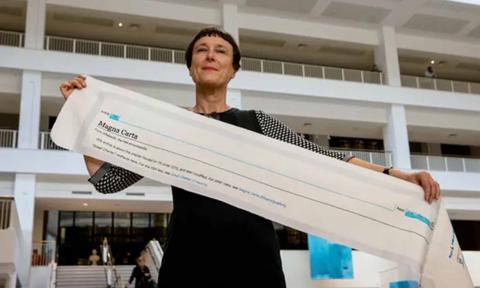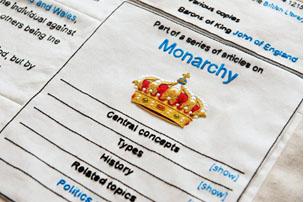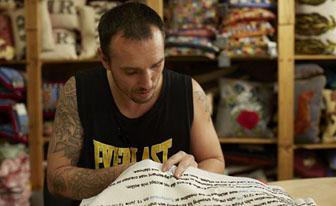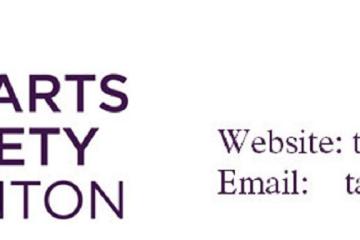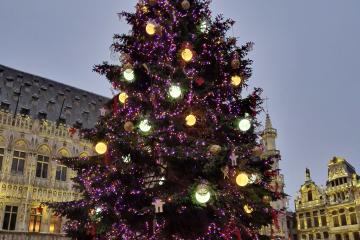Very successful raffles held at each monthly lecture enabled The Arts Society Taunton to distribute 100 bags filled w
A stitch in time …
A stitch in time …
29 Jun 2020
A Stitch in Time...
Magna Carta (An Embroidery) is a major new artwork by the acclaimed British artist Cornelia Parker that was commissioned by the Ruskin School of Art to celebrate the 800th anniversary of Magna Carta in 2015.
Cornelia Parker with a fragment of Magna Carta (An Embroidery). Photograph: Tony Antoniou
A landmark in constitutional history and a foundation of the concept of the rule of law, Magna Carta is one of the most famous documents ever written. What began life in the 13th century as a peace treaty between King John and his barons has come to be viewed as an iconic piece of our national history.
Fabricated by many hands, Magna Carta (An Embroidery) replicates in stitch the entire Wikipedia entry on Magna Carta as it appeared on the document’s 799th anniversary. The Wikipedia article regularly attracts more than 150,000 page views each month and is constantly being amended as the debate about the document and its legacy ebbs and flows.
‘Magna Carta (An Embroidery) is a snapshot of where the debate is right now,’ explains Parker. ‘Echoing the communal activity that resulted in the Bayeux Tapestry, but on this occasion placing more emphasis on the word rather than the image, I wanted to create an artwork that is a contemporary interpretation of Magna Carta.’
At nearly 13 metres long, it was painstakingly stitched by over 200 pairs of hands, each with individual ties to the document’s themes of civil liberty (including almost 40 prisoners). In addition to a rich assortment of peers, campaigners and lawyers, diverse public figures – from Liberty director Shami Chakrabarti and Baroness Doreen Lawrence to Brian Eno and Jarvis Cocker – also lent their needlework skills to the project. Incredibly, Parker arranged for Edward Snowden and Julian Assange to contribute words (’freedom’ and ’liberty’, respectively) from their exiles, lending the finished work an uncommon resonance and gravitas. ’I wanted the embroidery to raise questions about where we are with the principles laid down in the Magna Carta,’ Parker says, ’and about the challenges to all kinds of freedoms that we face in the digital age.’
Fine Cell Work, a social enterprise that trains inmates in needlework skills, dispatched the lion’s share of the tapestry to various prisons, while the most intricate embroidery was reserved for elite institutions like Hand & Lock, the Embroiderers’ Guild and the Royal School of Needlework.
But why Wikipedia? ’Like a Wikipedia article,’ Parker explains, ’this embroidery is multi-authored and full of many different voices.’ The process of reflection and review that the open source encyclopaedia encourages is also a digital parallel to the continuous re-examination of the principal tenets of liberty that the Magna Carta demands.
Main Illustration: Cornelia Parker with a fragment of Magna Carta (An Embroidery). Photograph: Tony Antoniou
About the Author
Jeni Fraser
JOIN OUR MAILING LIST
Become an instant expert!
Find out more about the arts by becoming a Supporter of The Arts Society.
For just £20 a year you will receive invitations to exclusive member events and courses, special offers and concessions, our regular newsletter and our beautiful arts magazine, full of news, views, events and artist profiles.
FIND YOUR NEAREST SOCIETY
MORE FEATURES
Lytham Hall, an exquisite Grade I listed Georgian house designed by John Carr of York, stands as a testament to 18th-


